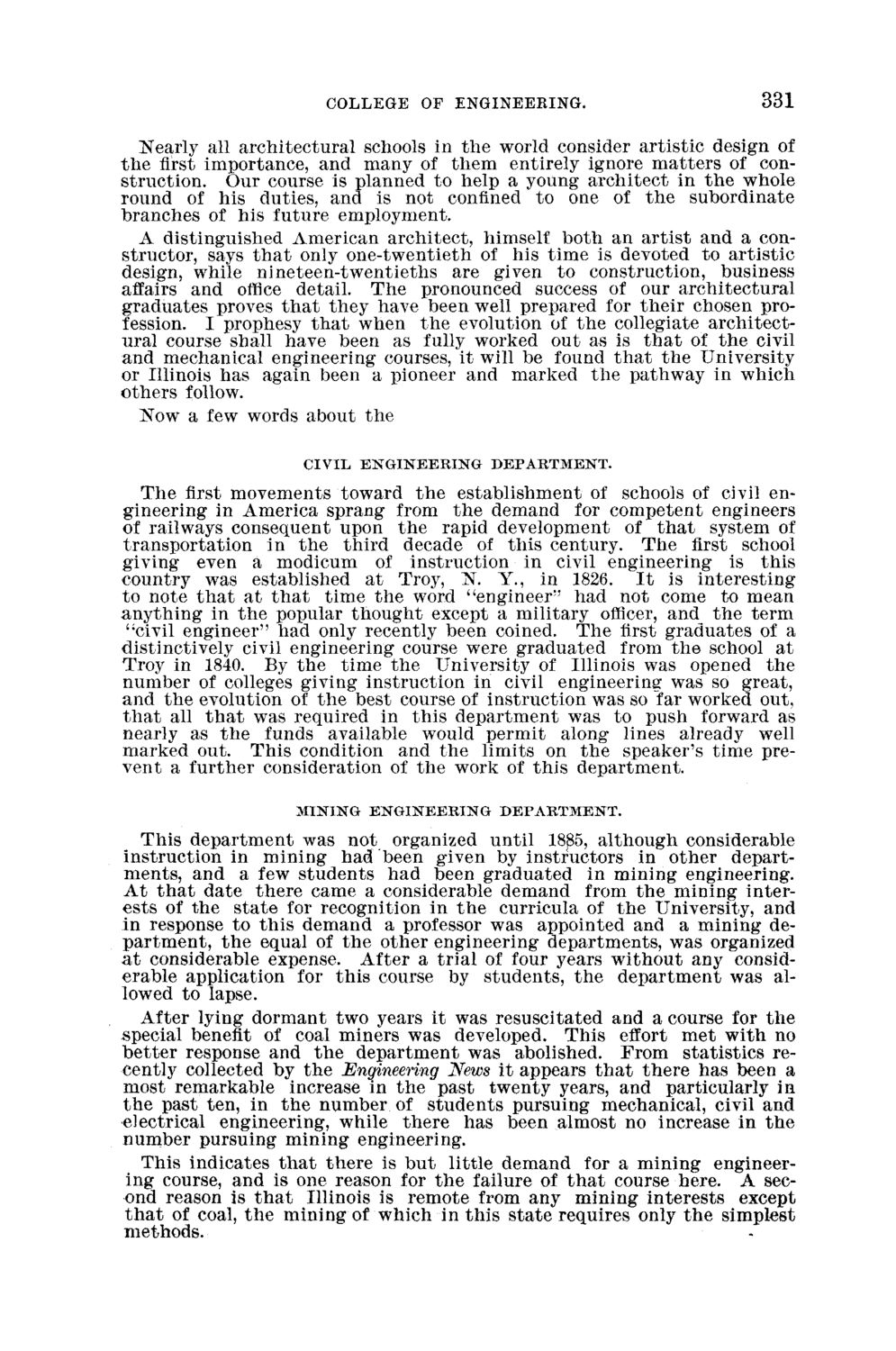| |
| |
Caption: Board of Trustees Minutes - 1894
This is a reduced-resolution page image for fast online browsing.

EXTRACTED TEXT FROM PAGE:
COLLEGE OF ENGINEEKING. 331 Nearly all architectural schools in the world consider artistic design of t h e first importance, and many of them entirely ignore matters of construction. Our course is planned to help a young architect in the whole round of his duties, and is not confined to one of t h e subordinate branches of his future employment. A distinguished American architect, himself both an artist and a constructor, says t h a t only one-twentieth of his time is devoted to artistic design, while nineteen-twentieths are given to construction, business affairs and office detail. The pronounced success of our architectural graduates proves t h a t they have been well prepared for their chosen profession. I prophesy t h a t when the evolution of t h e collegiate architectural course shall have been as fully worked out as is t h a t of t h e civil and mechanical engineering courses, it will be found t h a t the University or Illinois has again been a pioneer and marked the pathway in which others follow. ISTow a few words about the CIVIL E N G I N E E R I N G DEPARTMENT. The first movements toward t h e establishment of schools of civil engineering in America sprang from t h e demand for competent engineers of railways consequent upon the rapid development of t h a t system of transportation in the third decade of this century. The first school giving even a modicum of instruction in civil engineering is this country was established at Troy, N. Y., in 1826. I t is interesting to note t h a t at t h a t time the word "engineer" had not come to mean anything in the popular thought except a military officer, and the term "civil engineer" had only recently been coined. The first graduates of a distinctively civil engineering course were graduated from the school at Troy in 1840. By the time the University of Illinois was opened the number of colleges giving instruction in civil engineering was so great, and the evolution of the best course of instruction was so far worked out, t h a t all t h a t was required in this department was to push forward as nearly as t h e funds available would permit along lines already well marked out. This condition and the limits on t h e speaker's time prevent a further consideration of the work of this department. MINING E N G I N E E R I N G D E P A R T M E N T . This department was not organized until 18£5, although considerable instruction in mining had been given by instructors in other departments, and a few students had been graduated in mining engineering. A t t h a t date there came a considerable demand from the mining interests of the state for recognition in t h e curricula of the University, and in response to this demand a professor was appointed and a mining department, t h e equal of the other engineering departments, was organized a t considerable expense. After a trial of four years without any considerable application for this course by students, the department was allowed to lapse. After lying dormant two years it was resuscitated and a course for the special benefit of coal miners was developed. This effort met with no better response and t h e department was abolished. From statistics recently collected by the Engineering News it appears t h a t there has been a most remarkable increase in the past twenty years, and particularly in t h e past ten, in the number of students pursuing mechanical, civil and electrical engineering, while there has been almost no increase in t h e number pursuing mining engineering. This indicates t h a t there is but little demand for a mining engineering course, and is one reason for the failure of t h a t course here. A second reason is t h a t Illinois is remote from any mining interests except t h a t of coal, t h e mining of which in this state requires only the simplest methods.
| |